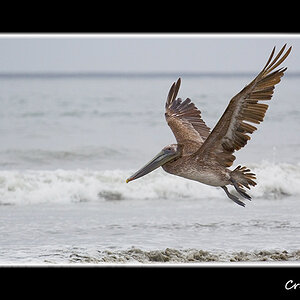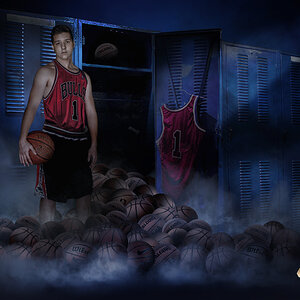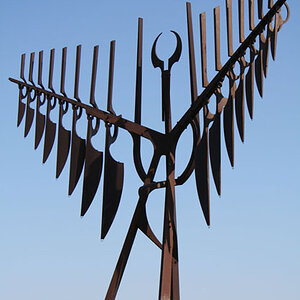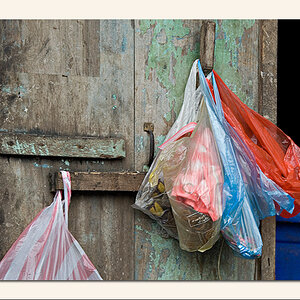Navigation
Install the app
How to install the app on iOS
Follow along with the video below to see how to install our site as a web app on your home screen.

Note: This feature currently requires accessing the site using the built-in Safari browser.
More options
You are using an out of date browser. It may not display this or other websites correctly.
You should upgrade or use an alternative browser.
You should upgrade or use an alternative browser.
Why shouldn't I use auto-mode?
- Thread starter tsabary
- Start date
Gary A.
Been spending a lot of time on here!
- Joined
- Sep 17, 2014
- Messages
- 22,357
- Reaction score
- 7,540
- Location
- Southern California
- Website
- www.garyayala.com
[QUOTE="KmH, post: 3359430, member: 40798"............Some of us older guys learned how to do photography before there were any auto modes (or auto focus).........
Or Auto ASA........... today called ISO.
Or Auto white balance.[/QUOTE]
Back then auto was a car not a camera mode.
- Joined
- May 1, 2008
- Messages
- 25,422
- Reaction score
- 5,001
- Location
- UK - England
- Website
- www.deviantart.com
- Can others edit my Photos
- Photos OK to edit
A few thoughts:
1) f2.8, ISO 100 1/200sec will give you exactly the same shot in manual mode as it will in aperture priority and in full auto and indeed any other mode on the camera.
Thus it is not so much important to ask what mode is best, but rather what mode will give you the settings you want in the situation you are in.
2) As you can see a big part of this is personal choice and working method. Thus the only way you can MAKE a choice is to be equipped with ability to use each of the core modes and thus be able to pick the mode that is going to work for you in the situation you are in and give you the shot you want.
3) Experience in photography will help a lot in letting you get a concept of what kind of shot you want to go for - or what kind of shot(s) are possible given the situation, subject and lighting conditions.
I would strongly advise learning to shoot in:
Aperture priority mode - In this mode you control the aperture (depth of field primarily, but also affects sharpness) and the ISO whilst the camera controls the shutter speed. Widely used mode, you're controlling the depth of field with the aperture and the camera does the rest with the shutter speed.
Generally so long as you keep an eye on the shutter speed you can often get away using this mode in most conditions.
Shutter priority mode - In this mode you control the shutter speed (affects sharpness of any motion in the shot - as well as handshake when holding the camera for a shot) and the ISO whilst the camera controls the aperture. This is a great mode when you know you want a certain shutter speed for a specific effect, or where you know you simply can't go slower than a certain speed. So you can control the shutter direct and let the camera worry about the aperture.
Eg when shooting propeller driven aircraft.
Note both the priority modes are great when you're in changing lighting. In those conditions the shifting in lighting can be picked up fast by the camera and it can make the exposure change quicker than you can; letting you keep on shooting shots.
Full manual - you control it all. You can define the settings for the scene and the camera will only report on the meter value you'll get with the light it reads.
This is ideal in any situation where you need that 100% control.
eg - when using flash dominated lighting for shots (since the camera meter can't account for flash light contributions to the exposure); when in fixed or nearly fixed lighting and you don't want the meter being fooled by the various reflective natures of the subjects and varying the exposure from the ideal.
Practice and experience will teach you much. If you can learn the above 3 modes I've mentioned and how to use them well that will be the best thing you can do. Then you can answer the question of when you should and shouldn't use any mode.
Note remember that any full auto mode or auto scene mode (eg landscape or macro mode). Makes many assumptions. It can turn out a decent shot; however you've no real control over it. Furthermore it limits you creatively as to what you can and can't do; plus more challenging conditions might be too complex for it to work well with.
Personally I started in auto mode - then progressed and did a lot in aperture priority. From there I've shot more in manual when I need to; but I make the mode choice myself based upon my skills and the strengths and weaknesses of each mode next to each other.
1) f2.8, ISO 100 1/200sec will give you exactly the same shot in manual mode as it will in aperture priority and in full auto and indeed any other mode on the camera.
Thus it is not so much important to ask what mode is best, but rather what mode will give you the settings you want in the situation you are in.
2) As you can see a big part of this is personal choice and working method. Thus the only way you can MAKE a choice is to be equipped with ability to use each of the core modes and thus be able to pick the mode that is going to work for you in the situation you are in and give you the shot you want.
3) Experience in photography will help a lot in letting you get a concept of what kind of shot you want to go for - or what kind of shot(s) are possible given the situation, subject and lighting conditions.
I would strongly advise learning to shoot in:
Aperture priority mode - In this mode you control the aperture (depth of field primarily, but also affects sharpness) and the ISO whilst the camera controls the shutter speed. Widely used mode, you're controlling the depth of field with the aperture and the camera does the rest with the shutter speed.
Generally so long as you keep an eye on the shutter speed you can often get away using this mode in most conditions.
Shutter priority mode - In this mode you control the shutter speed (affects sharpness of any motion in the shot - as well as handshake when holding the camera for a shot) and the ISO whilst the camera controls the aperture. This is a great mode when you know you want a certain shutter speed for a specific effect, or where you know you simply can't go slower than a certain speed. So you can control the shutter direct and let the camera worry about the aperture.
Eg when shooting propeller driven aircraft.
Note both the priority modes are great when you're in changing lighting. In those conditions the shifting in lighting can be picked up fast by the camera and it can make the exposure change quicker than you can; letting you keep on shooting shots.
Full manual - you control it all. You can define the settings for the scene and the camera will only report on the meter value you'll get with the light it reads.
This is ideal in any situation where you need that 100% control.
eg - when using flash dominated lighting for shots (since the camera meter can't account for flash light contributions to the exposure); when in fixed or nearly fixed lighting and you don't want the meter being fooled by the various reflective natures of the subjects and varying the exposure from the ideal.
Practice and experience will teach you much. If you can learn the above 3 modes I've mentioned and how to use them well that will be the best thing you can do. Then you can answer the question of when you should and shouldn't use any mode.
Note remember that any full auto mode or auto scene mode (eg landscape or macro mode). Makes many assumptions. It can turn out a decent shot; however you've no real control over it. Furthermore it limits you creatively as to what you can and can't do; plus more challenging conditions might be too complex for it to work well with.
Personally I started in auto mode - then progressed and did a lot in aperture priority. From there I've shot more in manual when I need to; but I make the mode choice myself based upon my skills and the strengths and weaknesses of each mode next to each other.
- Joined
- Mar 8, 2011
- Messages
- 25,160
- Reaction score
- 9,010
- Location
- Iowa
- Website
- pixels.com
- Can others edit my Photos
- Photos NOT OK to edit
Back then auto was a car not a camera mode.
No, back then "Auto" meant your mother told you to do something. And if you didn't, you'd catch he11 from pa when he got home (this usually involved pain). So when Ma said to do it, you auto!!!!

minicoop1985
Been spending a lot of time on here!
- Joined
- Sep 3, 2013
- Messages
- 5,520
- Reaction score
- 1,865
- Location
- Appleton, WI
- Can others edit my Photos
- Photos OK to edit
When I use flash, it's manual all the time. Well, unless I just need a little pop from a speedlight on camera. When not using flash, it's aperture priority.
- Joined
- Dec 9, 2006
- Messages
- 21,463
- Reaction score
- 12,454
- Location
- Maryland
- Can others edit my Photos
- Photos OK to edit
............Some of us older guys learned how to do photography before there were any auto modes (or auto focus).........
Or Auto ASA........... today called ISO.
Or Auto white balance.
Yep. The closest thing to auto white balance was B&W film.
- Joined
- Mar 8, 2011
- Messages
- 25,160
- Reaction score
- 9,010
- Location
- Iowa
- Website
- pixels.com
- Can others edit my Photos
- Photos NOT OK to edit
Yep. The closest thing to auto white balance was B&W film.
Or a bag full of filters.
- Joined
- Dec 9, 2006
- Messages
- 21,463
- Reaction score
- 12,454
- Location
- Maryland
- Can others edit my Photos
- Photos OK to edit
Yep. The closest thing to auto white balance was B&W film.
Or a bag full of filters.
But you'd have to actually put the filters on - not really auto. Maybe semi-auto (like A, S or P)
To the OP - You paid for those other modes, feel free to use them.
dannylightning
Been spending a lot of time on here!
- Joined
- Mar 23, 2014
- Messages
- 2,322
- Reaction score
- 770
- Location
- Akron Ohio
- Can others edit my Photos
- Photos OK to edit
Nothing wrong with using auto mode, its nice to have auto mode how ever using manual modes you can Taylor the photo to the way you want it to look, with auto mode you are stuck with the type of image the camera chooses for you. there are allot of things you can do with manual mode that auto mode will not give you.
shooting in aperture priority usually works out well for most things and its a nice way to get used to making some manual changes.
I personally like to shoot in manual mode all the time but i will often turn on auto ISO. that way I can adjust the shutter speed and aperture and the camera will adjust the ISO for me and will usually properly expose the image and I get the aperture and shutter speeds that I want.. I mainly use auto ISO when shooting things that I know will be there and gone quickly and I may not have time to adjust the camera settings before the shot is gone.
Any time I know Ill have all the time I need to get that shot I turn off the auto ISO and adjust it all my self, I would do it that way all of the time except I know I would have missed some good shots of wildlife if I would not have been using auto ISO. some days just panning the camera a little to the left or right can really screw up your exposure if the lighting is different in the spot you panned the camera too and if you do not have the time to adjust the settings than you miss the shot or get a poorly exposed shot. If it were not for that type of thing I would never use auto ISO but it sure comes in handy at times.
.
shooting in aperture priority usually works out well for most things and its a nice way to get used to making some manual changes.
I personally like to shoot in manual mode all the time but i will often turn on auto ISO. that way I can adjust the shutter speed and aperture and the camera will adjust the ISO for me and will usually properly expose the image and I get the aperture and shutter speeds that I want.. I mainly use auto ISO when shooting things that I know will be there and gone quickly and I may not have time to adjust the camera settings before the shot is gone.
Any time I know Ill have all the time I need to get that shot I turn off the auto ISO and adjust it all my self, I would do it that way all of the time except I know I would have missed some good shots of wildlife if I would not have been using auto ISO. some days just panning the camera a little to the left or right can really screw up your exposure if the lighting is different in the spot you panned the camera too and if you do not have the time to adjust the settings than you miss the shot or get a poorly exposed shot. If it were not for that type of thing I would never use auto ISO but it sure comes in handy at times.
.
unpopular
Been spending a lot of time on here!
There is nothing wrong with auto mode. It does the same exact thing. I think the problem with auto mode for new photographers is that they start thinking it does something it's not.
Auto mode is just that, it's automation. It doesn't "make choices" it dials in controls. The issue becomes if you do not intuitively understand how these controls affect exposure, depth of field and image quality, you're going to have a lot of trouble understanding how to use auto mode and what kinds of controls there are within it.
This whole auto verses manual mode is waste of time. But that said, I think there are a lot of good reasons to learn manual mode early on.
Auto mode is just that, it's automation. It doesn't "make choices" it dials in controls. The issue becomes if you do not intuitively understand how these controls affect exposure, depth of field and image quality, you're going to have a lot of trouble understanding how to use auto mode and what kinds of controls there are within it.
This whole auto verses manual mode is waste of time. But that said, I think there are a lot of good reasons to learn manual mode early on.
Roba
No longer a newbie, moving up!
- Joined
- Aug 17, 2013
- Messages
- 165
- Reaction score
- 46
- Location
- Rangiora NZ
- Can others edit my Photos
- Photos OK to edit
The more i got into photography, the more control on how the picture turned out became important.
I started in Auto mode, but got fed up watching the focus points dancing all over the place and not focusing on what I wanted.
Then DOF was not how I liked and so on.
Leave ISO on auto for a while, and have a play with A and S.
I started in Auto mode, but got fed up watching the focus points dancing all over the place and not focusing on what I wanted.
Then DOF was not how I liked and so on.
Leave ISO on auto for a while, and have a play with A and S.
Actinia
No longer a newbie, moving up!
- Joined
- Aug 2, 2014
- Messages
- 203
- Reaction score
- 46
- Location
- Essex, UK
- Can others edit my Photos
- Photos OK to edit
I have just finished reading Bryan Peterson's Understanding Exposure. In this, for each shot he explains how he uses manual mode, either by setting an aperture and moving the pointer manually to the indicated shutter speed, or vice versa. Since he does this almost every time, I am wondering why he does not use either Aperture priority or Shutter priority as appropriate. I know there are occasions (rather few in the photos he depicts) where he needs to change the 'Auto' setting. But this is easily done using A or S Priority!
Last edited:
- Joined
- May 1, 2008
- Messages
- 25,422
- Reaction score
- 5,001
- Location
- UK - England
- Website
- www.deviantart.com
- Can others edit my Photos
- Photos OK to edit
Actinia there are times when semi-auto modes are too jumpy. Remember that the camera reads reflected light off a subject not direct light from the source. So a black surface and a white surface will reflect different amounts; furthermore the camera is always going for that middle grey value.
Thus you could be shooting in light that isn't changing, but with different coloured subjects filling a primary part of the metered segment of the frame. You might want the exposure itself the same for each shot, but the camera would want different exposures for each one. .
You'd find this a lot if you used an external light meter and read light from the source as opposed to reflected.
Thus you could be shooting in light that isn't changing, but with different coloured subjects filling a primary part of the metered segment of the frame. You might want the exposure itself the same for each shot, but the camera would want different exposures for each one. .
You'd find this a lot if you used an external light meter and read light from the source as opposed to reflected.
bribrius
Been spending a lot of time on here!
- Joined
- Jan 12, 2014
- Messages
- 8,709
- Reaction score
- 1,311
- Can others edit my Photos
- Photos NOT OK to edit
usually shoot manual but when carving pumpkins with the kids the other day i used auto.
a. it was much more relaxing and kind of a breath of fresh air.
b. it didn't take my mind off the actual events i was engaging in as long.
c. i didn't have to mess with settings over and over i could forget about it, took fifteen photos or so. no headache and good enough for the family photo album..
a. it was much more relaxing and kind of a breath of fresh air.
b. it didn't take my mind off the actual events i was engaging in as long.
c. i didn't have to mess with settings over and over i could forget about it, took fifteen photos or so. no headache and good enough for the family photo album..
Actinia
No longer a newbie, moving up!
- Joined
- Aug 2, 2014
- Messages
- 203
- Reaction score
- 46
- Location
- Essex, UK
- Can others edit my Photos
- Photos OK to edit
Actinia there are times when semi-auto modes are too jumpy. Remember that the camera reads reflected light off a subject not direct light from the source. So a black surface and a white surface will reflect different amounts; furthermore the camera is always going for that middle grey value.
Thus you could be shooting in light that isn't changing, but with different coloured subjects filling a primary part of the metered segment of the frame. You might want the exposure itself the same for each shot, but the camera would want different exposures for each one. .
You'd find this a lot if you used an external light meter and read light from the source as opposed to reflected.
This does not really address the point I was trying to make. Despite recommending the standard use of Manual, Patterson is effectively using either Aperture Priority or Shutter Priority, and occasionally tweaking the 'recommended' settings if this does not give him the result he needs. This seems to cover the criticisms you are making.

![[No title]](/data/xfmg/thumbnail/30/30992-773558233723ab0d28c307a97a1a2427.jpg?1619734556)
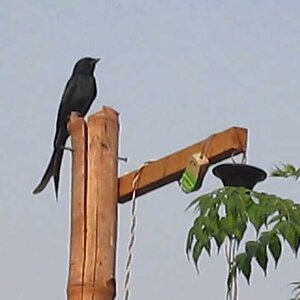

![[No title]](/data/xfmg/thumbnail/39/39446-903cfeac143cee6330a51546ecfdda92.jpg?1619739035)
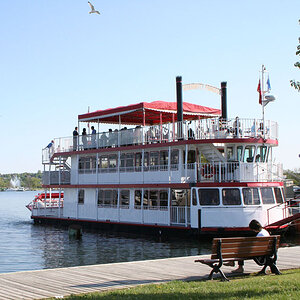
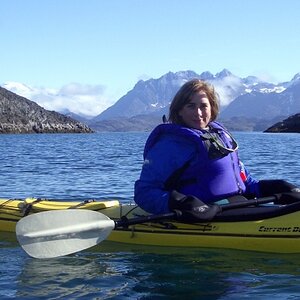
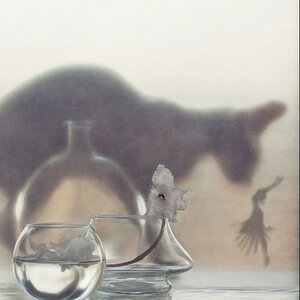
![[No title]](/data/xfmg/thumbnail/36/36302-6ee4929dfdf80290ffd73704693e860f.jpg?1619737496)
